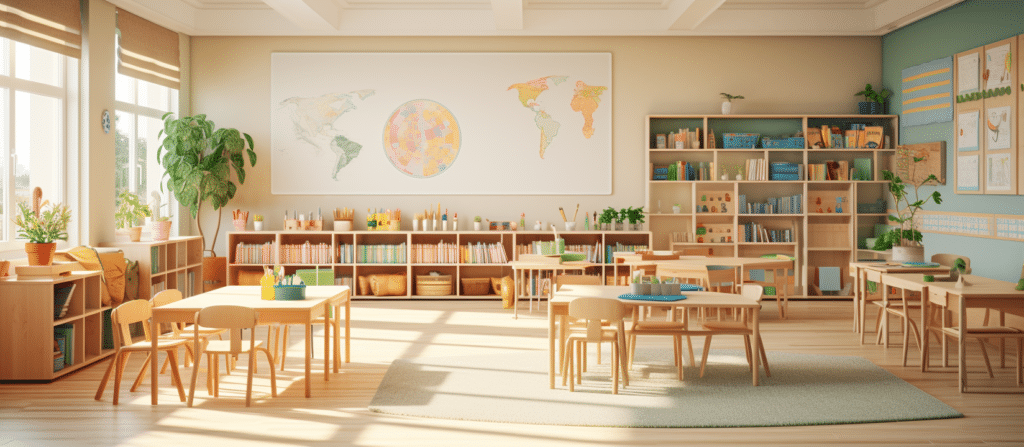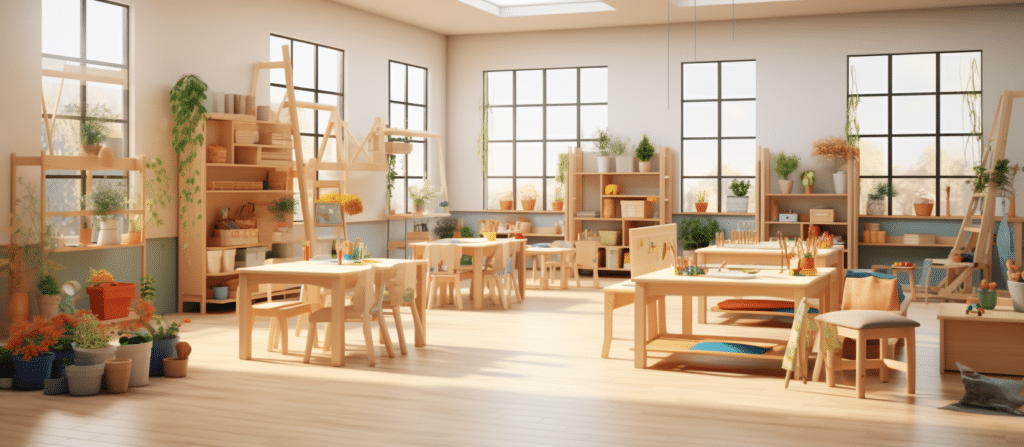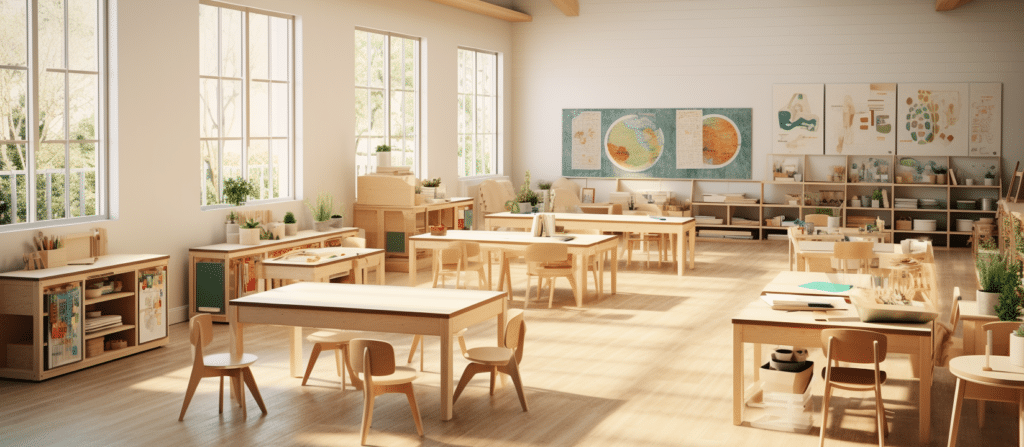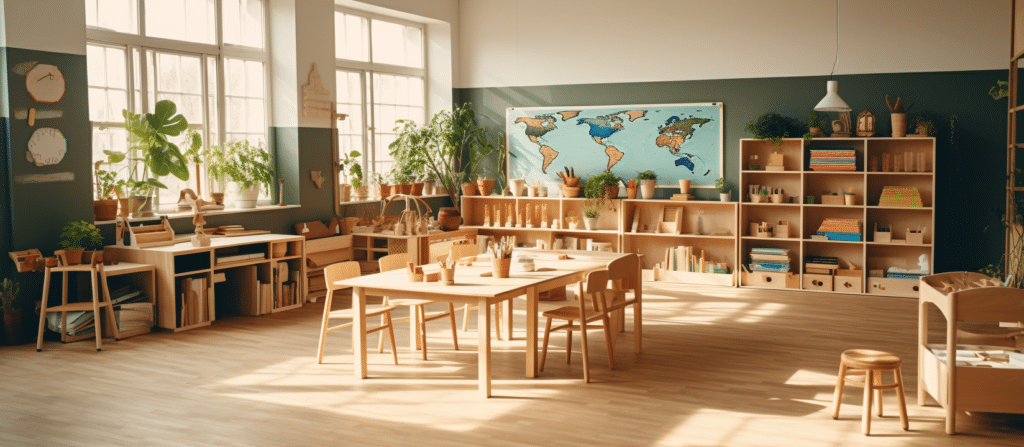Looking to create a dynamic and engaging environment for children in your daycare? Choosing the right daycare furniture is the key to promoting active play and movement. Are you wondering how to make your daycare space more conducive to physical activity? Let’s explore the importance of selecting the right furniture to encourage active play among kids.
Daycare Furniture for Active Play and Movement is all about creating an environment where children can move, play, and explore freely. It’s about selecting furniture that not only provides comfort but also inspires physical activity. We’ll delve into how well-chosen furniture can contribute to a healthier and more engaging daycare experience.
What Makes Daycare Furniture for Active Play and Movement Essential?
Children are naturally energetic and curious, and it is crucial to provide them with a safe and stimulating environment that encourages physical activity and exploration. Daycare furniture designed for active play and movement helps children develop gross motor skills, coordination, and balance while also fostering their creativity and imagination.

The Benefits of Daycare Furniture for Active Play and Movement
1. Physical Development: Active play and movement are crucial for developing children’s gross motor skills, strength, and coordination. Daycare furniture such as climbing structures, balance beams, and soft play equipment provide children with opportunities to climb, jump, crawl, and balance, helping them develop their muscles and improve their coordination.
2. Cognitive Development: Engaging in physical activities stimulates children’s brain development. When children play on daycare furniture designed for active play, they are required to think, problem-solve, and make decisions, which enhances their cognitive and problem-solving skills.
3. Social and Emotional Development: Active play and movement promote social interaction and cooperation among children. When children engage in physical activities together, they learn to take turns, share, and communicate effectively with their peers. This fosters the development of social skills and emotional intelligence.
4. Creativity and Imagination: Daycare furniture designed for active play and movement encourages children to use their imagination and creativity. Whether it’s pretending to be astronauts on a spaceship or building a fort with soft play equipment, children can explore their creativity and expand their imaginative thinking.
How can daycare furniture support active play and movement?
Daycare furniture designed specifically for active play and movement can provide children with the tools they need to engage in various physical activities. Here are some examples of daycare furniture that can promote active play:
- Climbing Structures: Climbing structures such as jungle gyms, climbing walls, and ladders encourage children to develop upper body strength, balance, and coordination. They can also help improve gross motor skills and promote imaginative play.
- Balance Beams: Balance beams are great for enhancing children’s balance, coordination, and spatial awareness. They can be set up indoors or outdoors and provide children with a challenging yet fun activity to improve their physical abilities.
- Soft Play Equipment: Soft play equipment, such as foam blocks and mats, allows children to explore and engage in safe physical play. They can jump, crawl, and roll on these soft surfaces, promoting gross motor skills and encouraging creativity.
- Active Seating: Traditional chairs can limit movement and hinder children’s ability to engage in active play. Active seating options, such as wobble chairs or stability balls, allow children to move and wiggle while sitting, promoting core strength and improving focus.

How to Choose the Right Daycare Furniture for Active Play and Movement
When selecting daycare furniture for active play and movement, it is essential to consider the following factors:
1. Safety: Safety should always be the top priority when choosing daycare furniture. Ensure that the furniture is sturdy and durable, with rounded edges and non-slip surfaces to prevent accidents and injuries.
2. Age Appropriateness: Different age groups require different types of furniture. Consider the age range of the children in your daycare center and choose furniture that is suitable for their developmental stage.
3. Versatility: Opt for daycare furniture that offers a variety of play opportunities. Look for furniture that can be easily rearranged or transformed into different configurations, allowing children to engage in different types of activities.
4. Quality and Durability: Invest in high-quality daycare furniture that can withstand daily use and last for years. Choose furniture made from durable materials that are easy to clean and maintain.
5. Comfort: Ensure that the furniture is comfortable for children to use. Soft cushions, ergonomic design, and adjustable features can enhance children’s comfort and support their physical development.

Creating an Active Play and Movement Space in Your Daycare Center
Now that you understand the benefits of daycare furniture for active play and movement, it’s time to create an engaging and stimulating environment in your daycare center. Here are a few tips to get you started:
1. Design a Play Area: Create a designated play area in your daycare center where children can engage in active play and movement. Use colorful rugs, soft play equipment, and climbing structures to define the space and encourage exploration.
2. Incorporate a Variety of Furniture: Include a range of daycare furniture that promotes different types of physical activities. From climbing walls to balance beams, trampolines to crawling tunnels, provide children with a diverse range of options to keep them engaged and active.
3. Encourage Free Play: Allow children to freely explore and choose the activities they enjoy. Provide open-ended materials such as balls, blocks, and art supplies to encourage creativity and independent play.
4. Outdoor Play: Whenever possible, incorporate outdoor play areas into your daycare center. Outdoor spaces provide children with fresh air, natural light, and ample space to run, jump, and play freely.
5. Safety Measures: Regularly inspect and maintain the daycare furniture to ensure that it remains safe for children to use. Conduct safety checks, repair any damages promptly, and follow all safety guidelines and regulations.

Conclusion
Daycare furniture designed for active play and movement plays a vital role in creating a fun and engaging environment for children. It promotes their physical, cognitive, social, and emotional development while nurturing their creativity and imagination. By investing in high-quality daycare furniture that prioritizes safety, versatility, and comfort, you can provide children with the tools they need to thrive and grow.












